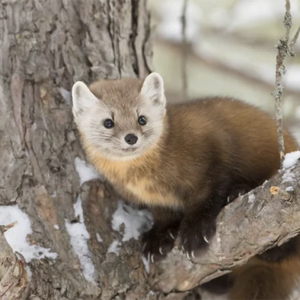
The world has some pretty strange creatures roaming the Earth (have you seen humans?!) and it’s nearly impossible to tell just how many. Whether it’s a mammal, marine animal, insect, or anything in-between, there are millions of species across the planet, some of which have yet to be discovered because of their stealth abilities or their hard-to-reach locale. However, thanks to the Internet, many species are getting special recognition no matter what corner of the Earth people live in, and one that is just emerging is the Great potoo, a bird that is native to Central and South America.

The Great potoo, which is scientifically known as Nyctibius grandis, is a medium-sized bird that resembles an owl and is also nocturnal. They’re known for their proportionally large head and even more proportionally large eyes, the irises of which are brown to bright yellow.

With photos of dark-eyed Great potoos, which is the largest of the potoo species, people were beginning to think that they were photoshopped but this happens to be a real bird. Other qualities that the Great potoo has are their impeccable camouflage skills, which allow the bird to look exactly like a branch of the trees it frequents. So although the Great potoo is not endangered, they are not typically seen by people because they blend in so well during the day and aren’t active until the nighttime. In order to better camouflage themselves, they usually close their eyes when perched on their signatures trees as well. This is probably for the best because their eyes can be extremely intimidating.

Thankfully, this species is listed as that of “least concern,” according to the International Union for Conservation of Nature, and they typically live in areas where there isn’t much risk of habitat destruction or a sudden decrease in population due to disturbances. Their bodies offer little meat so they aren’t usually used as a food source, unless the locals are particularly short on resources. However, they are at risk of being killed in order to have their feathers used in ceremonies because the feathers are said to ward off seduction and aid in chastity. But first, the locals have to find them while they’re camouflaged…
What are your thoughts? Please comment below and share this news!


